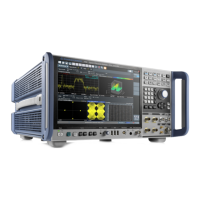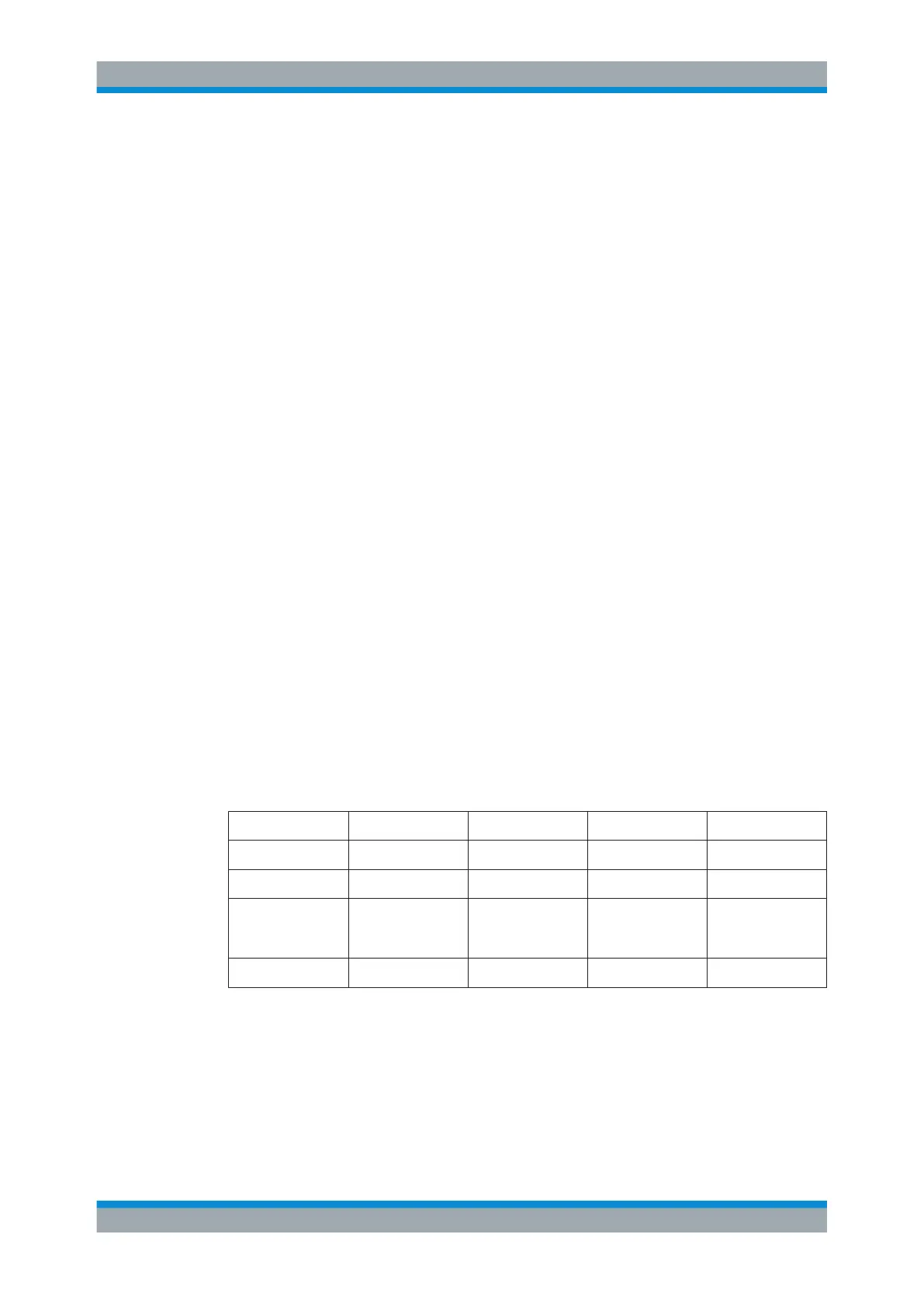Measurements and Results
R&S
®
FSW
337User Manual 1173.9411.02 ─ 43
Consider the following when defining the dwell time:
●
Unknown signals: select a dwell time of at least 1 second to ensure that pulses
down to a frequency of 5 Hz are weighted correctly
●
Pulsed signals or signals that fluctuate slowly: the dwell time must cover at
least the time until the first signal peak is measured; can require long dwell time
●
unmodulated signals or signals with a high modulation frequency: the dwell
time must cover at least the time until the first signal peak is measured; usually
shorter than for pulsed signals
When you change the frequency or the attenuation, the R&S FSW waits until the low-
pass filter has settled before starting the measurement. In this case, the measurement
time depends on the resolution bandwidth and the characteristics of the signal.
RMS Average detector (CISPR filter only)
The RMS Average detector is a combination of the RMS detector (for pulse repetition
frequencies above a corner frequency) and the Average detector (for pulse repetition
frequencies below the corner frequency). It thus achieves a pulse response curve with
the following characteristics:
●
10 dB/decade above the corner frequency
●
20 dB/decade below the corner frequency
The average value is determined by lowpass filters of the 2nd order (simulation of a
mechanical pointer instrument).
The RMS Average detector is only available for the CISPR filter.
The detector is used, for example, to measure broadband emissions and may replace
the quasipeak detector in the future.
The detector parameters depend on the measured frequency. The time lag of the simu-
lated pointer instrument reflects the weighting factor of the signal depending on its
form, modulation, etc.
Table 7-19: Required parameters depending on frequency for RMS Average detector
Band A Band B Band C/D Band E
Frequency range <150 kHz 150 kHz to 30 MHz 30 MHz to 1 GHz >1 GHz
IF bandwidth 200 Hz 9 kHz 120 kHz 1 MHz
Time lag of simula-
ted pointer instru-
ment
160 ms 160 ms 100 ms 100 ms
Corner frequency 10 Hz 100 Hz 100 Hz 1 kHz
The same considerations apply to the dwell time as for the CISPR average detector.
Electromagnetic Interference (EMI) Measurement

